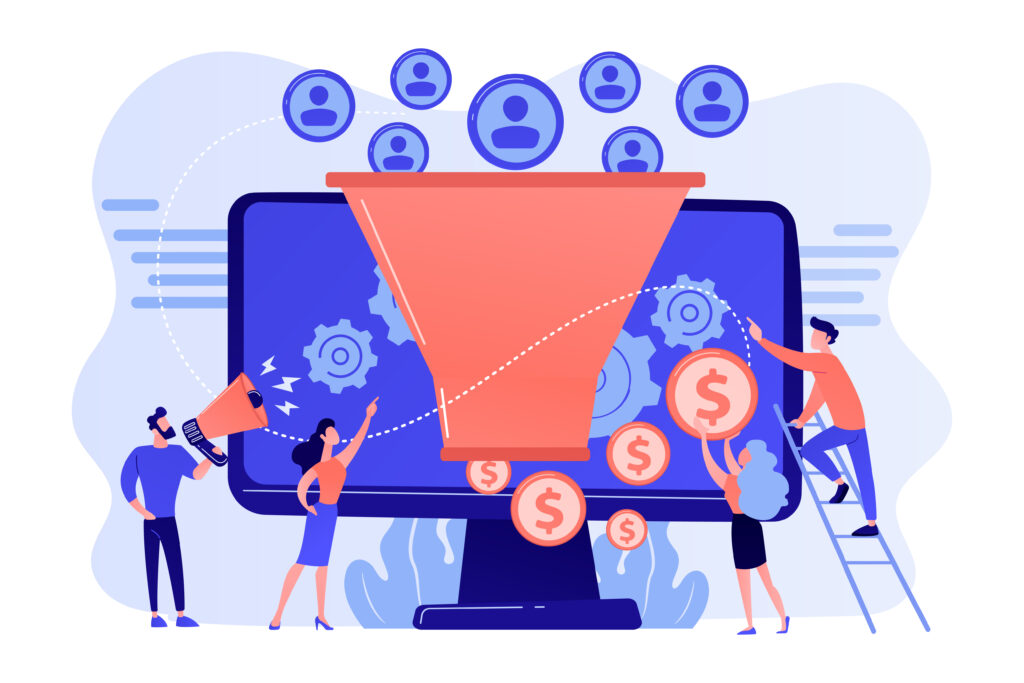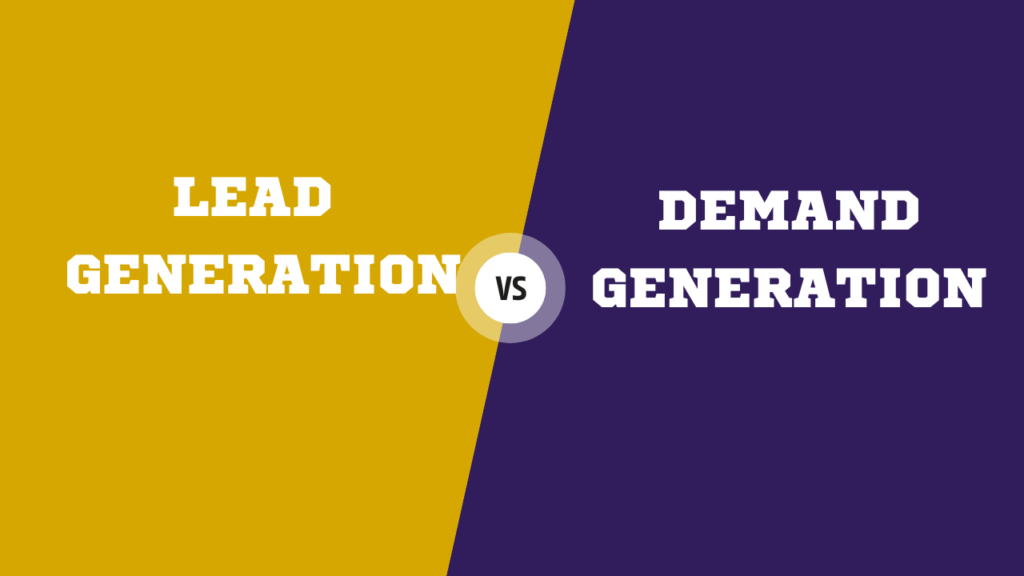As a savvy marketer, you understand the power of data-driven decisions. In this comprehensive guide, we’re delving into the realm of demand generation metrics and how they can supercharge your SaaS growth strategy. From awareness to revenue, these 14 essential metrics will empower you to optimize your marketing efforts with confidence.
14 Demand Generation Metrics To Measure For Success in 2024
Awareness and Engagement Metrics: Laying the Cornerstone
Picture your website as the grand gateway to your digital realm. Website traffic isn’t just a collection of numbers; it’s a symphony of visitors, each with their own story. It’s the heartbeat of your online presence, the pulse of your brand’s reach. Now, let’s dive deeper into the first section of our demand generation metrics guide to unearth the gold within awareness and engagement metrics.
1. Website Traffic: Beyond the Numbers
Imagine your website as a bustling marketplace where curious souls converge to explore what your SaaS offering brings to the table. The numbers on your analytics dashboard are like footprints, revealing the journey of these virtual explorers. But remember, it’s not about quantity alone; it’s about the qualitative insights these numbers provide.
Think of website traffic as the front door to your digital storefront. It’s the first impression your potential customers get, the initial handshake in the world of ones and zeros. The moment someone lands on your website, their digital footprint ignites a series of interactions that are your potential goldmine. However, understanding your audience’s behavior requires a Sherlock Holmes-esque sleuthing attitude. How do they navigate? What pages do they linger on? What’s the common route through your content maze?
Tools like Google Analytics hold the treasure map. They reveal the sources of your traffic—organic search, social media, referrals, and more. Each avenue tells a different story of your brand’s reach. Organic search implies your content’s SEO prowess, social media signifies your engagement levels, and referrals shed light on your collaborations. Remember, this isn’t just about hits; it’s about decoding patterns, anticipating user behavior, and optimizing your website to guide them seamlessly to where you want them to be.
2. Pageviews and Unique Visitors: Unraveling Engagement
Now, let’s focus our magnifying glass on page views and unique visitors—the twin pillars of engagement. Pageviews, like chapters in a book, indicate where visitors choose to linger. This tells you which content resonates most, and where your narrative strikes a chord. It’s the digital equivalent of a nod of approval from your readers.
But wait, there’s more. Unique visitors are like the footprints of intrigued souls who’ve wandered into your digital abode. They aren’t just numbers; they’re individuals exploring the corridors of your website. Understanding their navigation can reveal the paths less traveled, the hidden gems waiting to be discovered. By deciphering these paths, you can tailor your content strategy to amplify engagement.
These metrics aren’t just vanity metrics; they’re breadcrumbs leading you to the heart of your audience’s interests. Analyze them to uncover which sections of your website draw the most attention. Are visitors flocking to your blog? Is your pricing page generating curiosity? Armed with this knowledge, you can craft a content strategy that meets your audience where they are and leads them where you want them to go.
3. Bounce Rate: The Engagement Indicator
Ah, the enigmatic bounce rate—a metric that can tell tales of intrigue or unmet expectations. When a visitor lands on your page and departs without further interaction, it’s a bounce. However, high bounce rates don’t necessarily mean your content is a shipwreck; sometimes, visitors find what they’re looking for right away.
Yet, it’s essential to dig into the specifics. Are there specific pages with unusually high bounce rates? If your blog posts have high bounce rates, it could mean the content lacks depth or fails to align with visitors’ expectations set by the headline. Analyzing the bounce rate is like putting on a detective’s hat to uncover why visitors choose to say “goodbye” rather than “let’s explore.”
Optimizing your landing pages is key. A captivating headline that matches the content, compelling visuals, and clear call-to-action can reduce bounce rates. Think of your website as a theme park—you want visitors to stay and explore every attraction, not jump the fence after the first ride.
Lead Generation Metrics: Nurturing Your Prospects
We’ve embarked on a quest to unravel the mysteries of demand generation metrics, and now we’re diving headfirst into the exhilarating world of lead generation. Picture this: you’re not just collecting data, you’re sculpting your SaaS business’s destiny. In this section, we’ll dissect the intricacies of three vital metrics that transform casual passersby into loyal advocates of your brand.
4. Conversion Rate: Transforming Visitors into Prospects
Buckle up, for we’re about to explore the beating heart of lead generation—the conversion rate. Think of it as the magic wand that turns website visitors into enthusiastic prospects. When your carefully crafted call-to-action prompts visitors to take the desired action—be it subscribing to your newsletter or scheduling a demo—that’s a conversion. The higher the conversion rate, the more effective your website’s persuasion spells are.
The journey from visitor to prospect is a well-orchestrated ballet. It’s about crafting compelling content, engaging visuals, and a seamless user experience. Each element should lead your visitors down the path of no return—a path that culminates in their willingness to give you their contact information or explore deeper layers of your offering.
But the real secret sauce lies in constant refinement. A/B testing is your knight in shining armor here. Tweak your calls-to-action, experiment with placement and wording, and see what resonates best with your audience. Conversion rate optimization isn’t a one-time spell; it’s a continuous evolution that helps you extract maximum value from every digital interaction.
5. Click-Through Rate (CTR): The Email Enigma
Picture this: your meticulously crafted email lands in your subscribers’ inboxes. But there’s a catch—it needs to be enticing enough for them to click through and explore your offering further. That’s where the Click-Through Rate (CTR) comes in—a metric that encapsulates the art of intrigue.
Your subject line is your hook, and a high CTR signifies that your hook caught the attention of your audience. It’s the digital equivalent of getting a nod of approval from a crowded room. Crafting a subject line that piques curiosity while staying true to your content is no less than a high-stakes literary endeavor.
Remember, though, that the CTR isn’t the ultimate destination—it’s just the beginning of a journey. Your email’s content should deliver on the promises made in the subject line. Engaging visuals, clear calls-to-action, and a seamless user experience should guide the recipient toward the intended destination—a landing page, a product offering, or perhaps an exclusive content piece.
A/B testing your email campaigns can be your golden compass. Experiment with subject lines, explore different content formats, and analyze what resonates with your subscribers. The CTR isn’t just a metric; it’s a whisper from your audience, guiding you toward their preferences and expectations within your demand generation strategies.
6. Cost per Lead (CPL): Budgeting for Success
As a shrewd SaaS marketer, budgeting is your lifeblood. Every campaign, every action, every piece of content has a cost attached to it. The Cost per Lead (CPL) is your North Star—it guides your allocation of resources, ensuring that you’re not just generating leads but doing so cost-effectively.
Calculating CPL is straightforward: divide the total cost of your marketing efforts by the number of leads generated. This metric is your guardian against reckless spending, showing you where your marketing dollars are performing well and where they might be falling short.
However, the real power lies in the analysis that follows. If a particular campaign boasts a high CPL, dig deeper to uncover the reasons. Are your targeting parameters too broad? Is your content not resonating as expected? Use this insight to refine your strategies, optimize your campaigns, and ultimately, drive down your CPL while maintaining quality.
Lead Quality Metrics: Navigating with Precision
As we continue our voyage through the boundless sea of demand generation metrics, we now set our sights on a treasure trove of invaluable insights—lead quality metrics. It’s not just about generating leads; it’s about nurturing the right ones, those that hold the potential to evolve into steadfast customers. In this section, we’ll uncover the significance of Marketing Qualified Leads (MQLs), Sales Qualified Leads (SQLs), and the Lead-to-Customer Conversion Rate—the compasses that guide you through the realm of quality engagement within the demand generation process.
7. Marketing Qualified Leads (MQLs): Bridging the Gap
Picture your marketing ship sailing through the digital waves, casting its net to gather potential leads. Now imagine you’re catching a specific kind of fish—one that aligns with your ideal customer profile. These fish are your MQLs, and they are the bridge connecting your marketing efforts to the sales voyage that follows.
Defining MQLs isn’t just about quantity; it’s about quality. It’s about having a clear picture of your ideal customer—their pain points, needs, and aspirations. When you generate MQLs that fit this profile, you’re ensuring a smoother transition from marketing to sales. Your MQLs are already intrigued by your offering, making the sales pitch more of a continuation rather than a cold start.
But how do you identify these elusive MQLs? Demographic data, behavior patterns, and engagement history can all contribute to their classification. Analyze the types of content that resonate with them, the channels that capture their attention, and the actions that suggest intent. This strategic alignment between marketing and sales not only streamlines your efforts but also maximizes the chances of conversion.
8. Sales Qualified Leads (SQLs): Ready for Conversion
The magic of SQLs lies in their intent. These leads have demonstrated a keen interest in your offering, possibly by requesting a demo, signing up for a trial, or engaging in conversations with your team. They’re beyond the “tire-kicking” stage; they’re ready to set sail with your solution.
But here’s the art: not all MQLs are SQLs. An MQL can evolve into an SQL through the nurturing process, where they engage with your content, interact with your team, and display signs of readiness. SQLs are the crown jewels of your lead generation efforts—they’re the ones your sales team should be laser-focused on. By identifying and nurturing these leads, you optimize your sales efforts for maximum impact.
9. Lead-to-Customer Conversion Rate: Navigating the Journey for Your Demand Generation Plan
Envision a treasure map guiding your steps from the realm of leads to the shores of customer acquisition. The Lead-to-Customer Conversion Rate is the compass you wield—an essential metric illuminating your prowess in converting hard-earned leads into loyal paying customers. It’s the culmination of strategies nurtured, sales finesse, and your knack for delivering value.
Calculating this rate involves a simple division: the number of customers acquired divided by the number of leads generated. Yet, it’s far more than a numerical outcome; it’s your guiding star highlighting bottlenecks on your path. A low conversion rate could signal a disconnect between your marketing and sales messages, misalignment with audience expectations, or even product-fit quandaries.
Take heart, for this metric guides you. By tracking it, you fine-tune your nurturing strategies. Do your leads receive timely content? Does your sales team possess the expertise to address inquiries? Are there friction points in the customer journey begging for your attention? With insightful analysis, adaptable strategies, and amplified efforts, you navigate the conversion journey with prowess—integral to your thriving demand generation plan.
Channel-Specific Metrics: Tailoring Your Approach
As our voyage through the realm of demand generation metrics continues, we find ourselves at a crossroads of channels—each offering its unique currents and tides. Welcome to the world of channel-specific metrics, where social media and paid ads become the winds that carry your SaaS vessel toward uncharted shores of engagement and conversion.
10. Social Media Engagement: Igniting Interaction
Social media engagement is the hubbub—the likes, shares, comments, and retweets that signify an audience actively interacting with your content. It’s the applause of the digital age, an indication that your messages are resonating and sparking conversations.
But this isn’t a one-size-fits-all equation. Each social platform has its language, its rhythm, and its customs. Analyze which type of content resonates most with your audience on each platform. Is it informative blog posts, quirky visuals, thought-provoking polls, or behind-the-scenes glimpses? By deciphering these nuances, you tailor your content strategy for maximum engagement.
Engagement metrics go beyond the numbers—they’re a window into your audience’s preferences, beliefs, and aspirations. Engage with your engaged audience. Respond to comments, ask questions, and acknowledge shares. Turn your social media platforms into arenas of interaction, where conversations flourish, connections deepen, and your brand’s presence becomes a valuable part of their digital landscape across diverse demand generation channels.
11. Paid Ad Performance: Investing Wisely
Each click and conversion is a transaction—the currency of attention exchanged for the promise of value. Paid ad performance metrics are your ledger, meticulously recording the exchanges and guiding your investments for maximum return.
Clicks and conversions are the bread and butter of paid ads. They tell you if your offerings resonate with your audience. But it’s not just about the quantity; it’s about the quality. Analyze which ads are generating high-quality clicks—those that lead to meaningful interactions and conversions. Maybe your video ad outperforms the static image, or perhaps your ad’s targeting needs refinement.
Cost per Click (CPC) and Cost per Conversion (CPC) metrics help you assess the efficiency of your investments. A high CPC might indicate that your targeting isn’t precise enough or that your ad’s relevance needs improvement. By analyzing these metrics, you ensure that your financial resources are channeled into campaigns that yield the best returns.
Revenue and ROI Metrics: Navigating Success with Demand Generation Metrics
13. Customer Acquisition Cost (CAC): Calculating Efficiency with Demand Generation Metrics
Calculating CAC involves the art of summing up all your sales and marketing expenses—ranging from advertising costs to salaries and tools—then dividing this sum by the number of customers you’ve acquired. This metric isn’t just a number; it’s a compass that guides you toward understanding the investment required for each new customer, aligning with demand generation best practices. The lower the CAC, the more finely tuned and efficient your acquisition efforts become.
Yet, the true power of CAC lies not just in numbers but in the narratives they reveal. A high CAC might signal that your marketing endeavors are falling short of expected outcomes, or perhaps your sales process demands fine-tuning by demand generation best practices. Dive deep into this sea of data, unraveling the underlying reasons behind the numerical landscape. By refining your strategies according to the insights CAC provides, you set sail on a course of sustainable and profitable growth in line with demand generation best practices.
14. Return on Investment (ROI): The Ultimate Navigator in the World of Demand Generation Metrics
Envision your ship embarking on a grand voyage, laden with treasures of marketing endeavors. But how can you be certain that the treasures you return with are worth the journey undertaken? This is where ROI, the North Star of demand generation metrics, steps in—a guiding light that directs every decision you make on your marketing journey. ROI serves as the ultimate gauge of profitability, the compass that assures your marketing efforts yield fruit.
The mathematics of ROI is simple: deduct your total costs from your overall revenue and divide this result by your total costs. The higher the ROI, the more triumphant your marketing campaigns are in generating revenue beyond the expenses incurred.
However, remember that ROI is not a mere numerical entity; it’s a narrative. It’s a tale that unfolds, revealing how your demand generation metrics interweave with your SaaS business’s growth narrative. It invites you to delve into the details: Which campaigns yield the most potent ROI? What strategies magnify your returns? By immersing yourself in these intricacies, you’re not just decoding data; you’re penning a chronicle of victory, where each marketing endeavor converges harmoniously with business triumph.
Conclusion: Your Journey to Mastery Begins Now
Congratulations! You’ve just unlocked the vault of demand generation metrics essential for your SaaS business growth. Armed with these insights, you’re ready to make informed decisions that drive your marketing strategies forward. Remember, metrics aren’t just numbers; they’re your navigational tools, guiding you toward success. Embrace this data-driven journey, and watch your SaaS business thrive in the competitive landscape. Your mastery of demand generation metrics sets you on the path to marketing excellence.
Get in touch with the Gignaut team today to start measuring and improving your marketing efforts.
Check the Demand Generation handbook to learn more





